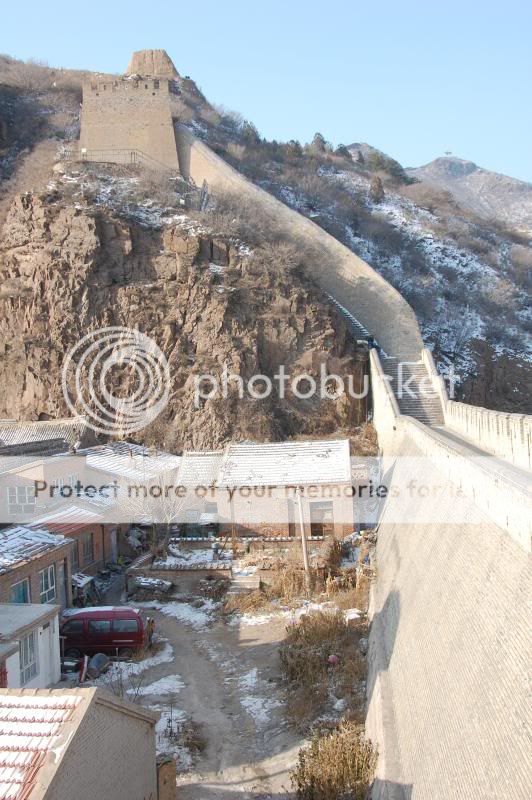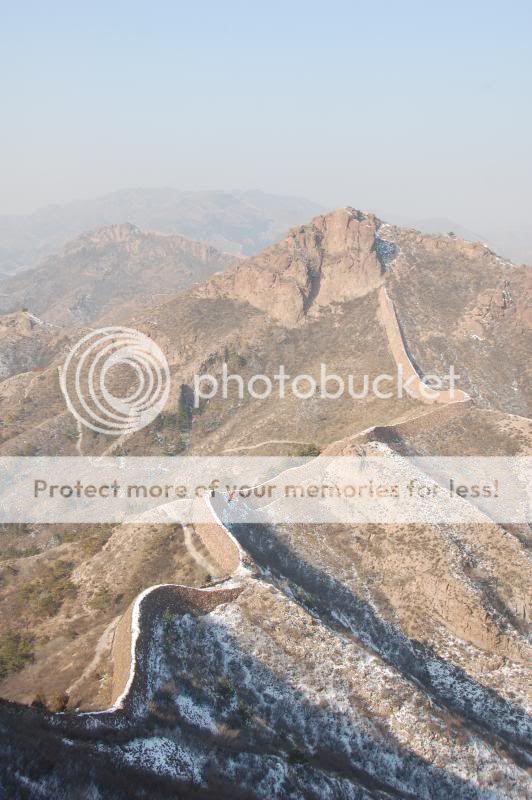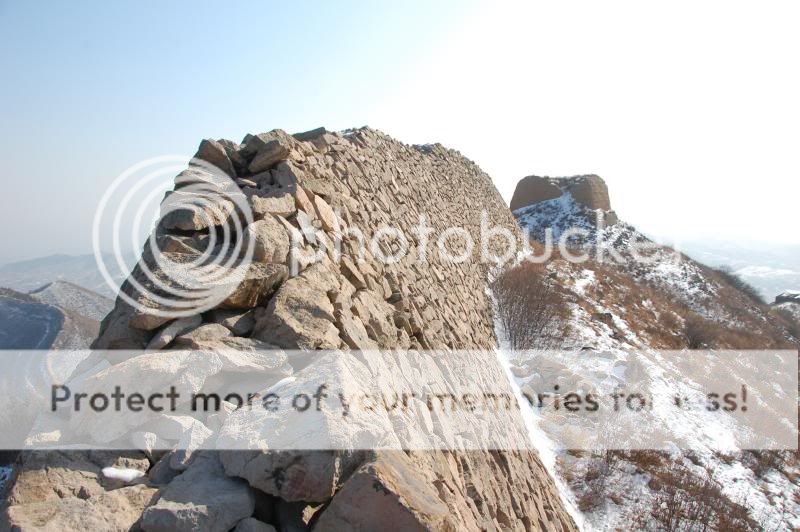Zhangjiakou
Chinese: 张家口
Pinyin: Zhāng jiá kǒu
English: Zhang's home pass
Coordinates: 40°48'36"N 114°52'46"E
Zhangjiakou urban area is a large city in the Zhangjiakou prefecture-level city of Hebei Province.
Zhangjiakou has an amazing variety of Great Walls from many different construction periods and using a wide variety of design and construction techniques. In addition to walls and other fortifications built in different periods of the Ming Dynasty, Zhangjiakou has Great Walls from the Zhou State, Jin State, and Yan State of the Warring States Period, Qin Dynasty, Han Dynasty, Northern Wei Dynasty, Northern Qi Dynasty, and Tang Dynasty! New walls were often built upon the existing, older walls. In all, there are thirteen distinct sections of Great Wall in the area, and they total more than 1,470 km (913 miles) in length. There are walls built of brick, stone, and rammed earth. Some are rectangular in section and some are tapered, with a wide base and a narrow top.
The northern wall of Yan State is spread over Guyuan County and Duolun of Inner Mongolia. The northern wall of Zhao State runs from Zhangjiakou City in the east to Xinghe County of Inner Mongolia. The northern wall of Zhao was damaged seriously and most sections had been renovated by the dynasties of Qin, Han, Northern Wei, Northern Qi, and Ming. The western section of the Qin wall stretches from Xinghe County of Inner Mongolia into the boundary between Hua'an County and Shangyi County of Zhanjiakou. The eastern section of the Qin wall runs northward and continues to use the original northern wall of Yan State. The Ming wall was built on the existing Northern Qi wall.
The extensive fortifications are due to the geographic and strategic location of Zhangjiakou. To the east are the Yan Mountains and to the west are the Yin Mountains. In between is a relatively level area that provided access to Beijing. This invited invasion and therefore required extra protection.
 Dajingmen
Dajingmen
During the Ming Dynasty, a large pass known as Dajingmen (Big Capital Gate) was built at the northern end of Zhangjiakou City in between the east and west Taiping Mountains. Dajingmen features a huge, arched opening measuring 12 meters (39 feet) tall, 9 meters (30 feet) wide and 13 meters (43 feet) deep. There are two iron gates, over which there is a large plaque with four impressive characters 大好河山 (Magnificent Mountains and Rivers) inscribed on it. Dajingmen was restored in 2006-2007 and is now officially open to visitors.
From Dajingmen, the wall leads for vast distances both to the east and to the west.
To the east of Dajingmen, the wall is not actually connected to the restored Dajingmen gate. To reach it, you will need to cross the Qingshui river bed further to the south, and then look for a trail that starts about 250 meters (800 feet) south of the wall. The trail leads up the side of the mountain and joins the wall, continuing alongside it on the south side for about 370 meters (1200 feet) before crossing over a collapsed place and then proceeding alongside on the north side. The path then continues for about 1200 meters (400 feet) before crossing back to the south side. There are at least three trails leading back down the mountain at this point. You can continue to follow the wall, but the easy-to-follow path ends here. If you continue to follow the wall towards the east, you will begin to notice ditches that are dug on the north side of the wall. These ditches provided material for constructing the inside of the wall and created an additional barrier to potential attackers. At a distance of about 56 kilometers (35 miles) from Dajingmen, the wall branches. Basically, one branch of the wall from here continues directly to the east while another branch goes to the north, loops around, and turns back to the south. At about 27 kilometers (17 miles) north (left) of the junction, and about 55 kilometers (34 miles) east of Zhangjiakou City, you will reach one of the highest elevations of the entire Great Wall at about 2130 meters (6960 feet). Further along, as you near the northernmost point of the loop, you will join a Qin Dynasty Great Wall which runs along or near the Ming Dynasty wall on and off for more than 26 kilometers (16 miles). Another path of the Qin Dynasty wall is located not far to the north of this one. You will also pass several Qin Dynasty fortresses along the way. Continuing straight (east) at the junction, instead of taking the north loop, would provide the shortest path, but this wall is not continuous. It is more or less continuous for about 46 kilometers (29 miles) before you reach a gap of about 23 kilometers (14 miles). If instead you took the north path at the junction, you would reach the same point after some170 kilometers (105 miles) of wall that, while not continuous, does not have any large gaps. From here the wall continues southeast towards Beijing. You would reach the Beijing Knot, where the outer wall joins the inner wall at Jiankou, after about 58 kilometers (36 miles) along the wall.
 The Ming Dynasty stone wall at Zhangjiakou
The Ming Dynasty stone wall at Zhangjiakou
To the west of Dajingmen, the wall connects directly and there is an easy path that follows the wall on its south side for 4 kilometers (2.5 miles) before ending at a road crossing. Continue following the wall for an additional 24 kilometers (15 miles) and you will reach a junction with a Qin Dynasty Great Wall. The walls actually run parallel for a distance of about 1100 meters (3600 feet) to the west before the Qin wall ends. Further to the west, it's possible that the Ming Dynasty wall was built on the existing foundation of the Qin wall. From the junction point, the Qin wall continues to the northeast towards, and beyond the northern loop to the east of Dajingmen. There are more parallel spans of the Qin Dynasty Great Wall further along, and the Ming wall continues to the Datong area, 183 kilometers (114 miles) away, and beyond.
69 fortresses were built in the Zhangjiakou area during the Ming Dynasty.
Over 50 significant battles took place in Zhangjiakou. There are more than 200 ancient battlefields, fortresses and army headquarters sites.
Location summary: Zhangjiakou is about 163 kilometers (101 miles) from downtown Beijing.
Driving directions: From Deshengmen City Gate near the Jishuitan subway station on the north side of Beijing, drive north and northwest on the G110 Badaling Expressway for 170 kilometers (106 miles) to Zhangjiakou.










